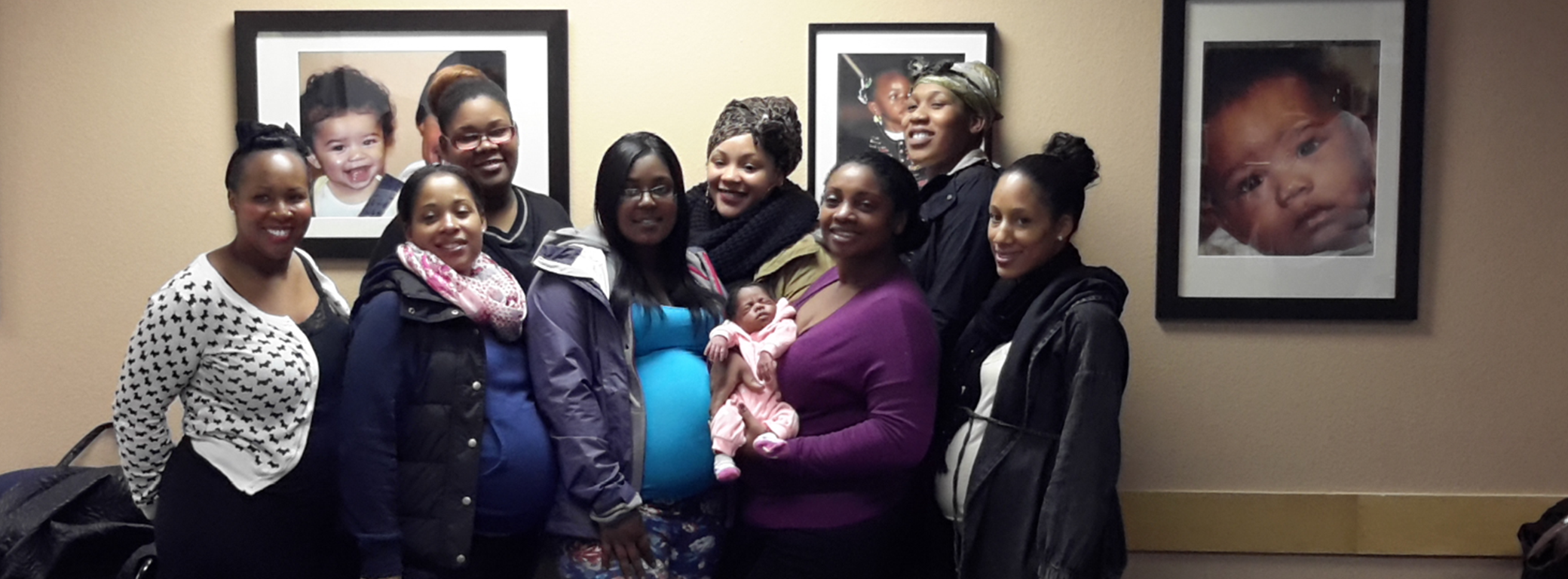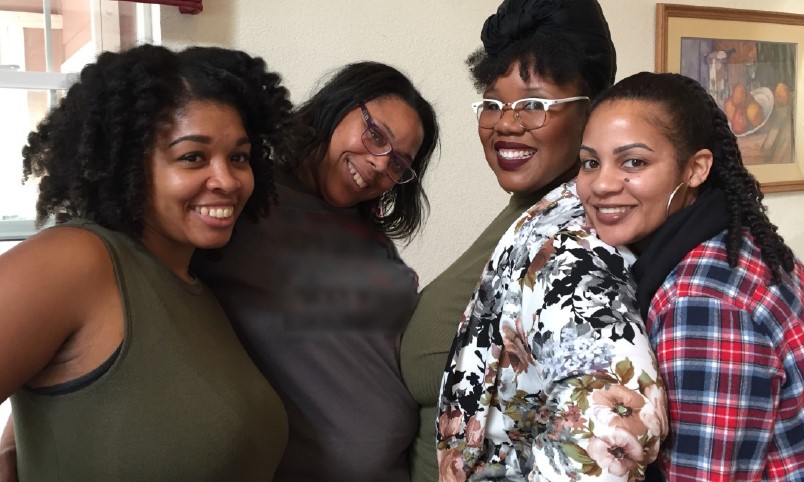Intermediate Outcomes Among Prenatal Group Model Participants

Public health recognizes that racism,1 as well as social and economic stressors, play a major role in poor birth outcomes—babies born too early and too small—for Black women and birthing people. TheCalifornia Black Infant Health (BIH) Program is an evidence-informed group model with complementary one-on-one life planning designed to improve birth outcomes in the Black community by enhancing life skills, improving strategies to reduce stress, and building social support. An evaluation of prenatal program implementation and outcomes was conducted for participants enrolled between July 1, 2015 and June 30, 2018 across 17 sites in 15 local health jurisdictions throughout California. For additional details about the program, the evaluation and other results please visit
Black Infant Health Program.
This brief examines how well BIH helped participants in the prenatal period to achieve intended intermediate health outcomes. Intermediate health outcomes are the short-term health milestones that indicate positive movement toward the long-term goal of healthy birth outcomes2 for Black women and birthing people. These outcomes were analyzed using data shared by 1,571 participants who participated in at least one prenatal group session, and who completed assessments both before/during the program and prior to the birth of their child.
| Average age in years at enrollment |
27.9 |
| Gestational age in weeks at enrollment |
19.0 |
| Percentage that were on their first pregnancy |
27.4% |
Data Source: Data includes participants that were recruited and enrolled over 3 state fiscal years (July 1, 2015 – June 30, 2018) and completed a baseline and follow-up survey (n=1571). Extracted from BIH State data system on 12/31/18. These participants were similar to those who joined group but didn't complete survey
BIH participant experiences with the group model
 "Group setting was a highlight for me. The staff here is loving, caring, and we were able to pop up at any time, we gained a new family, I realized I am not alone, I was able to make new friends, and gain a new support system."
"Group setting was a highlight for me. The staff here is loving, caring, and we were able to pop up at any time, we gained a new family, I realized I am not alone, I was able to make new friends, and gain a new support system."
"Given me a place to go with like-minded women going through relatable things whereas before I would have had to keep it to myself. These women have help me recognize some of my forgotten gifts."
"The group provided me with a safe space to express myself and learn from other moms about their experiences. It gave me background to our history as African American women. I'm feeling blessed to be a part of this group."
| Length of prenatal enrollment in the program in days (6.5 months) |
136.7 |
| Prenatal groups sessions attended |
7.2 |
| Prenatal life planning meetings attended |
5.1 |
Data Source: Data includes participants that were recruited and enrolled over 3 state fiscal years (July 1, 2015 – June 30, 2018) and completed a baseline and follow-up survey (n=1571). Extracted from BIH State data system on 12/31/18.
BIH measured change in intermediate health outcomes using a Generalized Linear Mixed Model3 focusing on 18 outcome indicators and adjusting for multiple participant and program characteristics.
Table 1 provides results for outcomes that show significant positive change.
Overall, the results showed significant positive change for 13 out of 18 intermediate outcome indicators. The results align with participants' experiences by showing moderate increases in empowerment and social support as measured by standardized scales, increased use of stress management techniques, and positive change in multiple health knowledge and healthy behaviors indicators.
The largest improvements were observed for seven indicators:
- 60% decrease in no practical and emotional support
- 51% decrease in smoking within the last month
- 45% decrease in food insecurity
- 38% increase in the use of yoga, deep breathing, and/or meditation to manage stress
- 35% decrease in depressive symptoms
- 33% increase in intention to put baby to sleep on their back
Five indicators related to healthy behaviors did not show change after prenatal group model participation (drank soda fewer than three times in the last week, did not eat fast food, ate vegetables more than once a day, ate fruits more than once a day) or showed negative change (took a multivitamin, prenatal vitamin or folic acid every day) and do not appear in
Table 1. Positive change on these behaviors may depend on factors outside of people’s control (such as living in a food desert).
Results indicate that the BIH group model is a promising strategy to support the health of Black women and birthing people and their families.
Table 1. Participant intermediate outcomes before and after BIH prenatal participation.
Intermediate outcomes
|
Indicators
|
Measure among Participants Before Group Prenatal Services
|
Measure among Participants After Group Prenatal Services
|
Percent Change
|
Empower Black women and birthing people and build resiliency
|
Empowerment Score (mean) (score range 4-27, higher is better)
|
19.9
|
20.6
|
4% ▲
|
Promote social support and healthy relationships
|
Social Support Score (mean) (score range 10-40, higher is better)
|
32.2
|
33.2
|
3% ▲
|
Lack of practical and emotional support
|
5.0%
|
2.0%
|
60% ▼
|
Develop effective stress reduction strategies
|
Use of stress management techniques such as yoga, deep breathing, and meditation
|
50.6%
|
69.7%
|
38% ▲
|
Promote health knowledge and healthy behaviors
|
Smoking in the last month
|
9.2%
|
4.5%
|
51% ▼
|
Exercising more than 3 days in the last week
|
51.0%
|
55.7%
|
9% ▲
|
Knowledge of appropriate timing of delivery at 39-40 weeks
|
68.5%
|
86.1%
|
26% ▲
|
Intention to breastfeed their babies
|
91.0%
|
94.0%
|
3%▲
|
Intention to exclusively breastfeed their babies
|
61.2%
|
67.8%
|
11% ▲
|
Planning to put their baby to sleep on their back
|
68.0%
|
90.5%
|
33% ▲
|
Planning to use any method of birth control to prevent pregnancy after delivery
|
82.8%
|
87.9%
|
6% ▲
|
Other
|
Food insecurity
|
14.3%
|
7.8%
|
45% ▼
|
Depressive symptoms
|
22.8%
|
14.8%
|
35% ▼
|
Data Source: Data includes participants that were recruited and enrolled over 3 state fiscal years (July 1, 2015 – June 30, 2018) and completed a baseline and follow-up survey (n=1571). Extracted from BIH State data system on 12/31/18. Results presented are adjusted for participant age and education at baseline; number of weeks between enrollment and first prenatal group session; number of prenatal group sessions attended; average group size; total minutes of life planning received; number of unique facilitators encountered; percent of sessions offering child watch, food, and transportation. Participants missing information about age (n=7) or education (n=21) are excluded from the multivariate models.
Summary
References
-
Office of Minority Health and Health Equity (OMHHE). Centers for Disease Control and Prevention. April 12, 2021. Accessed May 12,2021. https://www.cdc.gov/healthequity/racism-disparities/index.html
-
State Infant Mortality Collaborative: Infant Mortality Toolkit. State Infant Mortality (SIM) Toolkit: A Standardized Approach forExamining Infant Mortality. November 1, 2013. Accessed May 12, 2021. http://www.amchp.org/programsandtopics/data-assessment/InfantMortalityToolkit/Pages/default.aspx
-
Introduction to Generalized Linear Mixed Models. UCLA: Statistical Consulting Group. Accessed May 12, 2021. https://stats.idre.ucla.edu/other/mult-pkg/introduction-to-generalized-linear-mixed-models